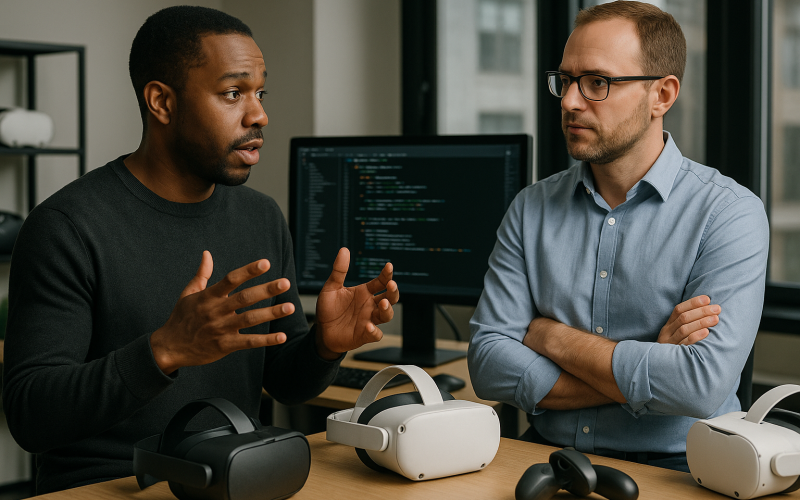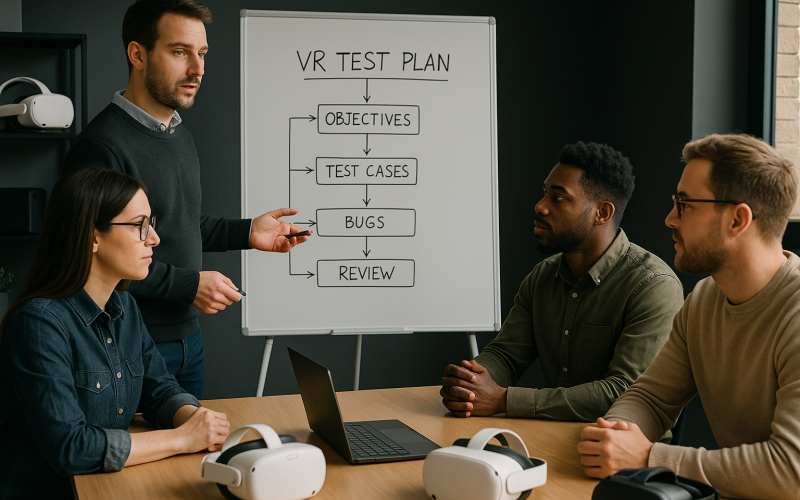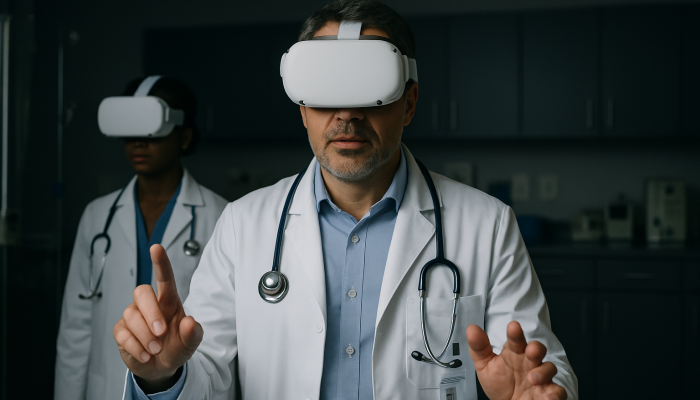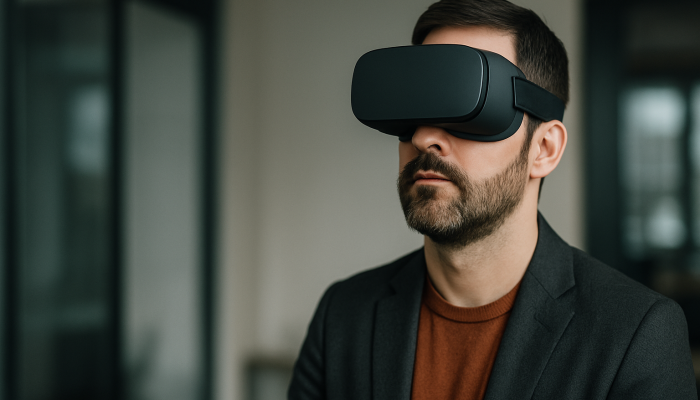VR Testing Matters: What Every XR Team Should Know
As virtual reality (VR) technology becomes more mainstream, the expectations around immersive experiences are rising fast. Whether it’s for gaming, training, therapy, or enterprise use — one thing is certain: users expect VR apps to feel seamless, intuitive, and stable. That’s where VR testing comes in.
In this post, we’ll explore what VR testing really involves, why traditional QA methods fall short, and how MixedRealityTech helps developers deliver smooth, bug-free experiences that users can trust.

What Is VR Testing?
VR testing refers to the process of quality assurance (QA) specifically designed for virtual reality applications. It goes beyond conventional software testing because VR apps operate in a fully immersive 3D environment, requiring :
- Head-tracked responsiveness
- Real-time hand or controller inputs
- Spatial audio and visuals
- Smooth framerates for motion comfort
- Accurate interaction with objects in virtual space
Testing a VR app isn’t just about checking buttons and screens. It’s about ensuring the entire experience feels real, safe, and intuitive — no matter what hardware it’s running on.
Why VR Testing Is So Critical
In VR, small glitches can quickly break immersion or even cause motion sickness. Unlike mobile or web apps, bugs in VR can have physical consequences — dizziness, nausea, discomfort — and result in poor app ratings or high uninstall rates.
Key reasons VR testing is essential:
- Prevent motion discomfort from poor frame pacing
- Catch tracking issues with hands/controllers
- Ensure cross-device compatibility (Quest, Vive, Pico, etc.)
- Validate performance under real-world conditions
- Improve usability and accessibility across user types
- Reduce crashes and improve overall stability

What Makes VR Testing Different from Traditional QA?
Traditional QA relies on 2D interfaces, fixed screen sizes, and basic input methods like touch or mouse-click. But VR testing deals with :
- 360° environments
- Physical user movements
- Spatial audio
- Complex interactions using headsets, controllers, or hand-tracking
This requires a completely different QA mindset and testing infrastructure.
Our VR Testing Approach at MixedRealityTech
At MixedRealityTech, we offer full-cycle VR QA services with a team that has over 22,000+ hours of testing experience. We focus on real-device testing using popular headsets like :
- Meta Quest 2, 3, Pro
- Pico Neo
- HTC Vive / Vive Focus
- Valve Index
- HoloLens (for MR crossover projects)
Here’s how our VR QA process works:
1. Test Planning & Device Mapping
We begin by understanding your app’s:
- Target hardware
- User personas
- Environment constraints (seated, standing, room-scale)
- App goals (gaming, training, simulation, etc.)
Based on that, we design a custom test plan tailored to your goals.
2. Performance Testing
Performance is key in VR. We track:
- Frame rate (FPS) stability
- GPU/CPU usage under stress
- Memory consumption
- Thermal throttling on devices like Meta Quest
We simulate heavy use to ensure your app won’t drop frames or crash during real-world sessions
3. Motion Comfort & Usability Testing
We test your app’s comfort under real conditions:
- Simulated user behavior (fast movements, sudden turns)
- UI placement at safe distances
- Interaction latency
- Reactions to teleportation, locomotion, and scene transitions
We ensure the experience is smooth — especially for new or sensitive users.
4. Input & Interaction Validation
From controller inputs to hand gestures and gaze tracking, we test:
- Button mappings across platforms
- Hand-tracking responsiveness
- Collision detection
- Haptic feedback accuracy
- Object grabbing, throwing, and interaction behaviors
5. Cross-Device Testing
Every headset behaves differently. We run your app on multiple devices to uncover:
- Resolution scaling issues
- Controller mismatches
- Tracking loss under low light or occlusion
- UI drift or misalignment
6. Exploratory + Regression Testing
We combine structured test cases with exploratory sessions to catch hidden bugs:
- Audio sync issues
- Visual artifacts
- Uncaught error states
- Missed tutorial steps or onboarding blockers
Before each release, we also perform regression testing to ensure previous fixes still hold up.
Who Needs VR Testing?
Every VR product — from games to enterprise apps — needs strong QA to succeed.
We’ve helped:
- VR games (e.g., Pickleball One, which scored 4.4★ on Meta Store)
- Healthcare training simulations
- Productivity tools in MR
- Virtual classrooms and team collaboration apps
Whether you’re building for entertainment or education, your app’s quality defines its success.
The ROI of VR QA
Skimping on testing costs more in the long run. With proper QA, you get:
- Fewer crashes and refund requests
- Better reviews and ratings
- Faster approval on platforms like Meta Quest
- Higher user retention
- Lower churn due to technical issues
Why Choose MixedRealityTech for VR Testing?
- 22,000+ hours of VR/MR testing experience
- Real-device testing lab (Meta Quest, Pico, HTC, etc.)
- Flexible pricing (perfect for startups & enterprises)
- Detailed bug reports with logs, screen captures & videos
- Comfort & safety-focused approach
- FREE 2-week trial to experience our process risk-free
Contact Us
Fill out the form below and we will
contact you as soon as possible!



